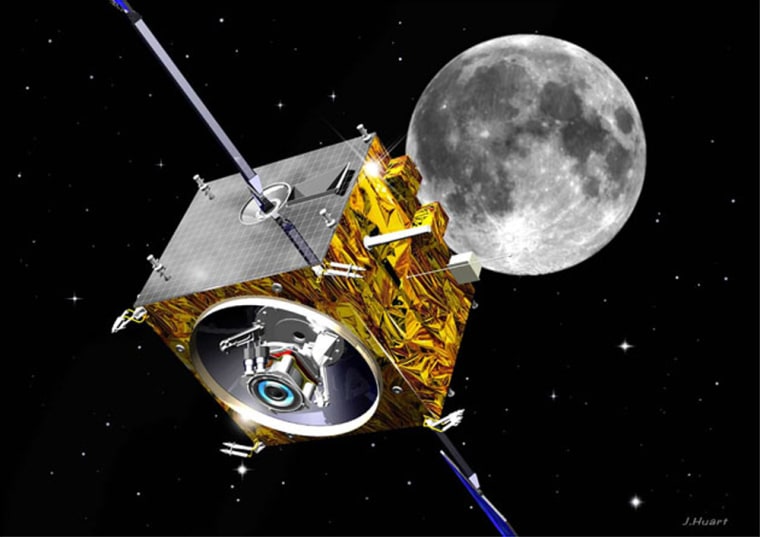A small spacecraft has made it into lunar orbit, signaling Europe’s first successful mission to the moon and paving the way for the craft to be used to study the lunar surface, a European Space Agency spokesman said Tuesday.
The SMART-1 probe made it to within 3,100 miles from the moon Monday morning, and will now begin spinning its way closer to the surface as it orbits, said ESA spokesman Franco Bonacina from the space agency’s headquarters in Paris.
By mid-January the dishwasher-sized spacecraft will be in an elliptical orbit that will take it within 185 miles of the moon’s south pole and 1,850 miles from the north pole, Bonacina said.
“Today we have celebrated the successful technology mission, and now we start with science — we want to do imaging of the surface and study the chemistry of the moon,” Bonacina said.
Over the last 13 months, the 809-pound probe has been puttering toward the moon in a mission controlled from the ESA’s operations center in Darmstadt. It measures 3.3 feet on each side, and solar panels, which help provide ion — or solar-electric — propulsion, spread 46 feet.
Surprising fuel efficiency
To reach the lunar orbit, it used only 130 pounds of the 181 pounds of xenon fuel it had aboard — less than expected and a feat that has raised hopes the technology can be used to send other craft longer distances.
“It works out to something like 1.24 million miles per quarter gallon, which is quite an achievement,” Bonacina said.
For this mission, the surprising fuel efficiency of the spacecraft means that the agency might be able to extend its six-month scientific mission by up to a year, if it can find the additional funding, Bonacina said.
When the mission is eventually complete, the probe will be left to crash onto the moon’s surface.
The mission marks the second time that ion propulsion has been used as a primary propulsion system. The first was the Deep Space 1 probe launched by NASA in October 1998.
SMART-1, short for “Small Missions for Advanced Research and Technology,” was developed for ESA by the Swedish Space Corporation with contributions from some 30 contractors in Europe and the United States. It took off aboard an Ariane-5 rocket in September 2003.
The total cost for the mission is $142.3 million, about a fifth of that required for a typical major space mission.
